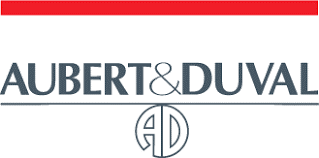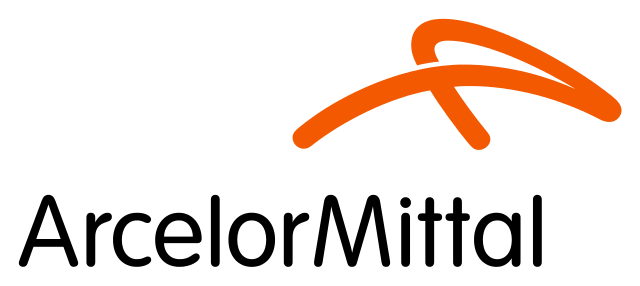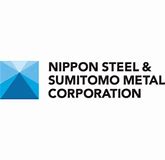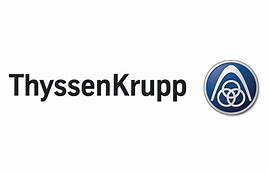Synthèse
Since 2020, the global steel industry has faced considerable challenges and transformations. The COVID-19 pandemic has led to a 6.4% drop in global demand, and production is also expected to fall sharply due to the downturn in economic activity. The French steel industry was particularly hard hit, with an expected economic contraction of 8.7% that year. Although a 7.4% rebound is expected in 2021, credit and insolvency risks, heavy reliance on bank financing and stagnant demand have put considerable pressure on the industry. Despite these headwinds, China continued to dominate steel production, holding a significant market share and contributing to the oversupply that drove down international prices. French steel consumption, while increasing at an average annual growth rate of 1.5%, had to cope with increased competitiveness and innovation, environmental factors and the sustainability of a declining domestic market.
Prices in France trended downwards due to competition, mainly from Chinese producers. The French sector faced major challenges, including securing the supply of resources in a context of international protectionism and market suppression by Asian companies.
Trends and resilience of the French steel market in the face of global challenges
The French steel industry has faced major challenges in recent years, with global influences exerting pressure on both domestic production and prices. Despite these challenges, steel consumption in France is on the rise, with overall consumption increasing at a compound annual growth rate (CAGR) of around 1% to 2%, reflecting the health of the economy and its investment in the construction and transportation sectors. Per capita consumption also rose over the same period, albeit at a slightly lower CAGR than overall consumption.this suggests that population growth is slightly outpacing growth in steel use.
France's global position in the steel market has weakened, mainly due to the predominance of Chinese production, which was responsible for more than half the world's steel output. European players, including France, were therefore faced with an oversupply on the world market, resulting in downward pressure on prices. Despite this, the size of the French market was observed to be between 12 and 15 billion dollars, albeit showing a decline compared to previous years. Trade flows presented a rosier picture, with France exporting more steel than it imports. The trade coverage ratio has remained stable in consecutive years, confirming that exports are outstripping imports. Germany has become the main destination for French steel exports, absorbing over 10%, followed by other major European economies. This demonstrates France's strong trade surplus in the steel industry, despite its heavy reliance on a wide range of international markets for its export business.
The domestic industry is highly volatile, with revenues fluctuating considerably from year to year. For example, a sharp decline was observed due to the poor performance of the construction sector. However, the industry has managed to post positive growth in other years. The French steel market faces a myriad of challenges, including competition from Asia, economic uncertainty and a global pandemic that severely disrupted demand and supply chains. To maintain sustained demand, French steelmakers must secure competitive access to primary and secondary resources, counter oversupply from Asian manufacturers, mitigate the effects of protectionism and cope with geopolitical uncertainties.
Despite these problems, technological developments and the sector's focus on high-quality steel production have enabled France to retain its place on the world steel market.rurgic industry, which forms the backbone of modern infrastructure and manufacturing, is characterized by a competitive and dynamic market structure, with several dominant players leading the charge.
- Among these titans, ArcelorMittal stands out not only for its significant contribution to global steel production, but also for its formidable presence in France thanks to its multiple production sites in the region.
- The China Baowu Group has established itself as a powerhouse, demonstrating China's primordial influence in the steel sector. This group has played a major role in making China the world's leading steel producer, underlining Asian influence in determining market trends and pricing structures.
- Japan's contribution to the steel market is embodied by Nippon Steel Corporation, a key entity renowned for its extensive activities and technological advances, contributing significantly to the competitive nature of the global market.
- In France, Riva Acier, a subsidiary of Italy's Riva Acier, is a notable French player alongside international giants, demonstrating resilience and adaptability in a market awash with intense competition.
- Vallourec, another French mainstay, leaves a substantial footprint on the steel industry with its specialized solutions for the energy and construction sectors, perpetuating France's heritage in high-quality steelmaking.
- Aubert & Duval, with a rich history and diversified portfolio, asserts its expertise in particular in the production of special steels and alloys, serving a variety of high-tech industries, illustrating the innovative spirit of the French steel sector.
Together, these players form a complex network of producers, innovators and forerunners in the steel industry. They navigate through different market dynamics, navigate through policy frameworks and continually adapt to meet the complex demands of a robust global marketplace. The segmentation and positioning of these players reflect not only their financial strength, but also their strategic influence on the direction and future of the industry.
à la compréhension de ce marché
Détail du contenu
 Informations
Informations
- Nombre de pages : 30 pages
- Format : Version digitale et PDF
- Dernière mise à jour : 22/06/2023
 Sommaire et extraits
Sommaire et extraits
1 Market summary
1.1 Definition and scope of the study
Steel is a metal alloy manufactured from iron ore and coal ore (with a carbon mass percentage ranging from 0.03% to 2%). [Futura Sciences] Other categories of iron-based alloys that differ from steel are cast iron (carbon supersaturated) and alloy steel.
Steel differs from other metal alloys in following properties:
- stiffness
- resistance to elastic deformation which depends on its carbon content (the less carbon it has, the more deformable it is).
- breaking strength
- resistance to irreversible deformation
- hardness
- impact resistance
- resilience.
China dominates global production with more than half of the world's output produced in 2019. This dominance comes as the nation relies heavily on urbanisation and demand for steel is high in construction for example, but also since the Chinese government actively implements strategies to cement their position as the world's largest producer.
Globally, the market for steel is expected to grow going forward. This comes as demand for steel in construction and transportation continues to increase. However, Europe's share in this expansion is decreasing, amid competition from China. For instance, the latter nation is oversupplying markets which pushes prices down.
France is also negatively impacted by higher compeition. The domestic market is shrinking, however overall consumption is up by a CAGR of 1.5% between 2013 and 2019. To resist a shrinkage of the domestic market France must look to factors such as increased innovation and environmental focus.
Market leaders in the steel industry include ArcelorMittal and China Baowu Group.
1.2 Steel production is increasing globally and is dominated by China
Global crude steel production World, ****-****, in million tonnes Source: ****
Steel production was severly affected by the global financial crisis between **** and ****. The construction and transport industry, which together account for over two-thirds of the steel market, were hit badly by economic stagnation, and hence demand decreased. However, since ****, production globally ...
1.3 Key figures for the national market
Industry revenue of steel industry (***) France, ****-****, in € million Source: ****
To obtain the market size depicted above, we use INSEE's revenue projections together with estimates for ****-**** based on the industry revenue index.
The French steel industry has declined somewhat since ****. In that year, the market size was €**.** billion; in ****, the ...
1.4 France's trade of steel
This section analyses France's bilateral trade agreements within the steel industry. In particular, it includes the following codes obtained from UN Comtrade:
****: Stainless steel in ingots or other primary forms; semi-finished products of stainless steel ****: Stainless steel; flat-rolled products of width of ***mm or more ****: Stainless steel; flat-rolled products of ...
2 Demand analysis
2.1 French steel consumption is increasing
Aggregate and per capita steel consumption France, ****-****, in million tonnes and kg/capita Source: ****
France's usage of steel has increased since **** up until ****, albeit with some volatility along the way. Between **** and ****, aggregate consumption (***) increased at a CAGR of *.*%, whilst the per capita consumption equivalent was a CAGR of *.*%. In ...
2.2 Construction is the largest driver of steel usage
Steel usage, by sector France, ****, in % Source: ****
The chart above confirms that construction and transport are the most steel-intensive industries in France, accounting for more than two-thirds of steel usage. Indeed, the majority of large modern structures, such as stadiums and skyscrapers, bridges, and airports, are supported by a steel.
For ...
2.3 Challenges needing to be met to improve demand
Moreover, going forward, it is essential to identify pain points of the French steel industry. It has more underlying problems than COVID-**; for many years the French and European market has been suppressed by Asian companies who, through over-supply, force prices down. Moreover, protectionism is still looming and causes uncertainty. In ...
3 Market structure
3.1 Production analysis
The production process There are two distinct processes for making steel: the Blast Furnace, made from iron ore and coal (***); the Electric Arc Furnace (***), made from recovered steel. The blast furnace production process is described below: The formation of pig iron: iron ore and coke are integrated into the blast furnace ...
3.2 French industry revenue is highly volatile
Revenue index France, ****-****, in units Source: ****
Revenue cyclicality in the French steel industry is high as the graph above demonstrates. Nevertheless, the market has demonstrated positive growth for all years except in ****, where weak growth in the construction sector caused a shrinkage of the market. [***]
3.3 A highly concentrated market structure, deriving from Asia
Top ten steel producing companies World, ****, in million tonnes Source: ****
Of the fifteen largest steel producers, only one company (***) which has ties to French production. [***]
M&A activity in the last years has been low, indicating a shift in focus from players from growth to competitiveness. Between **** and ****, global M&A ...
3.4 Case study: China
China is by far the dominating force drivin steel production worldwide. Below this becomes apparent; in ****, China accounted for *** million tonnes of steel produced, a whopping * times more than the second largest producer (***). It has capacity ** times that of the United States.
Global crude steel production, by country World, ****, in million ...
4 Analysis of the offer
4.1 Product Analysis
Steel is the second most produced commodity in the world after cement. The metal is widely used due to the fact that it is cheap, strong and very versatile. Steel is relatively environmentally friendly due to the fact that it is fully recyclable and uses low levels of energy. Most steel ...
4.2 French steel prices declining amid fiercer competition
Price index steel France, ****-****, index value (***) Source: ****
The price index above depicts prices for steel sold (***) influences, and margins are becoming smaller.
Globally, in monetary terms, the price of steel as of September **** was *,*** Yuan/million ton. [***] This is a Year-on-Year decrease of some *.**%.
4.3 Production costs rely on raw materials
Three key factors are involved in the manufacture of steel: raw materials, energy and labour. The two former factors are the most important determinants of costs, and also the largest drivers.
In general, eight factors contribute to determining the cost of producing steel:
The composition of the steel and its chemical ...
5 Rules and regulations
5.1 Regulations in force
The EU is the world's second largest producer of steel after China. The union is serious in its' ambitions to enhance this sector as it is linked to the rise of the industrial sector in Europe; by the end of **** it expects the overall industry to account for **% of the Union's ...
5.2 Trade wars & steel prices
In parallel to Donald Trump's inauguration, an international trade war commenced amid perceived injustices amongst the Americans in the global trade and tariff scene.
The European Union was affected by this strategy as well, where steel in particular was idenitified as an economic pain point, and thus targeted. In March ** ****, the ...
6 Positioning of the actors
6.1 Segmentation of actors
 Liste des graphiques
Liste des graphiques
- Production d'acier brut
- Production d'acier brut
- Recettes de l'industrie sidérurgique (24.10Z) HT
- Prévision de PIB réel
- Commerce d'acier, formes primaires
Toutes nos études sont disponible en ligne et en PDF
Nous vous proposons de consulter un exemple de notre travail d'étude sur un autre marché !
Dernières actualités
Entreprises citées dans cette étude
Cette étude contient un panorama complet des entreprises du marché avec les derniers chiffres et actualités de chaque entreprise :
 Choisir cette étude c'est :
Choisir cette étude c'est :
Accéder à plus de 35 heures de travail
Nos études sont le résultat de plus de 35 heures de recherches et d'analyses. Utiliser nos études vous permet de consacrer plus de temps et de valeur ajoutée à vos projets.
Profiter de 6 années d'expérience et de plus de 1500 études sectorielles déjà produites
Notre expertise nous permet de produire des études complètes dans tous les secteurs, y compris des marchés de niche ou naissants.
Notre savoir-faire et notre méthodologie nous permet de produire des études avec un rapport qualité-prix unique
Accéder à plusieurs milliers d'articles et données payantes
Businesscoot a accès à l'ensemble de la presse économique payante ainsi qu'à des bases de données exclusives pour réaliser ses études de marché (+ 30 000 articles et sources privées).
Afin d'enrichir nos études, nos analystes utilisent également des indicateurs web (semrush, trends…) pour identifier les tendances sur un marché et les stratégies des entreprises. (Consulter nos sources payantes)
Un accompagnement garanti après votre achat
Une équipe dédiée au service après-vente, pour vous garantir un niveau de satisfaction élevé. (+33) 9 70 46 55 00
Un format digital pensé pour nos utilisateurs
Vous accédez à un PDF mais aussi à une version digitale pensée pour nos clients. Cette version vous permet d’accéder aux sources, aux données au format Excel et aux graphiques. Le contenu de l'étude peut ainsi être facilement récupéré et adapté pour vos supports.
 Nos offres :
Nos offres :
the steel market | France
- Quels sont les chiffres sur la taille et la croissance du marché ?
- Quels leviers tirent la croissance du marché et leur évolution ?
- Quel est le positionnement des entreprises sur la chaine de valeur ?
- Comment se différencient les entreprises du marché ?
- Données issues de plusieurs dizaines de bases de données
Pack 5 études (-15%) France
- 5 études au prix de 75,6€HT par étude à choisir parmi nos 800 titres sur le catalogue France pendant 12 mois
- Conservez -15% sur les études supplémentaires achetées
- Choisissez le remboursement des crédits non consommés au terme des 12 mois (durée du pack)
Consultez les conditions du pack et de remboursement des crédits non consommés.
- 03/03/2024 - Mise à jour des données financières de l'entreprise Ascometal
- 03/03/2024 - Mise à jour des données financières de l'entreprise Aubert et Duval
- 03/03/2024 - Mise à jour des données financières de l'entreprise Vallourec
- 03/03/2024 - Mise à jour des données financières de l'entreprise Riva Acier France
- 21/12/2023 - Ajout des informations de l'entreprise Ascometal
- 02/12/2023 - Mise à jour des données financières de l'entreprise Aubert et Duval
- 02/12/2023 - Mise à jour des données financières de l'entreprise Vallourec
- 02/12/2023 - Mise à jour des données financières de l'entreprise Riva Acier France
- 01/09/2023 - Mise à jour des données financières de l'entreprise Aubert et Duval
- 01/09/2023 - Mise à jour des données financières de l'entreprise Vallourec
- 01/09/2023 - Mise à jour des données financières de l'entreprise Riva Acier France
- 25/07/2023 - Mise à jour des données financières de l'entreprise ArcelorMittal
- 19/05/2023 - Mise à jour des données financières de l'entreprise Aubert et Duval
- 19/05/2023 - Mise à jour des données financières de l'entreprise Vallourec
- 19/05/2023 - Mise à jour des données financières de l'entreprise Riva Acier France
- 21/02/2023 - Mise à jour des données financières de l'entreprise ThyssenKrupp
- 21/02/2023 - Mise à jour des données financières de l'entreprise ArcelorMittal
- 18/02/2023 - Mise à jour des données financières de l'entreprise Aubert et Duval
- 18/02/2023 - Mise à jour des données financières de l'entreprise Vallourec
- 18/02/2023 - Mise à jour des données financières de l'entreprise Riva Acier France
- 08/01/2023 - Ajout des informations de l'entreprise ThyssenKrupp





 Redressé, Vallourec lorgne l’hydrogène - 11/02/2024
Redressé, Vallourec lorgne l’hydrogène - 11/02/2024
 Aubert et Duval investit 75 millions dans une presse dédiée à l’avion du futur à Pamiers, dans l’Ariège - 06/02/2024
Aubert et Duval investit 75 millions dans une presse dédiée à l’avion du futur à Pamiers, dans l’Ariège - 06/02/2024
 ArcelorMittal : l'Italie sur le point de mettre sous tutelle l'une des plus grandes aciéries d'Europe - 18/01/2024
ArcelorMittal : l'Italie sur le point de mettre sous tutelle l'une des plus grandes aciéries d'Europe - 18/01/2024
 Maison-Blanche inquiète de voir passer US Steel sous pavillon japonais - 22/12/2023
Maison-Blanche inquiète de voir passer US Steel sous pavillon japonais - 22/12/2023
 Trois sites français d’Ascometal en passe d’être rachetés par le groupe italien Acciaierie Venete - 20/12/2023
Trois sites français d’Ascometal en passe d’être rachetés par le groupe italien Acciaierie Venete - 20/12/2023















